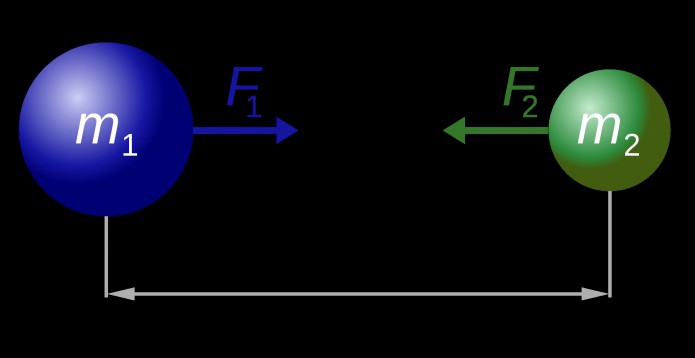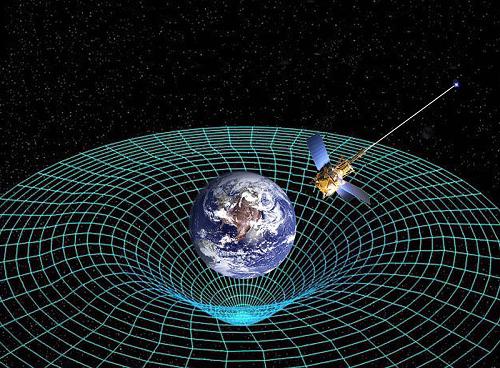Gravitational forces: definition, formula, types
To the question "What is power?" physics answers this way: "Force is a measure of the interaction of material bodies with each other or between bodies and other material objects - physical fields." All forces in nature can be attributed to four fundamental types of interactions: strong, weak, electromagnetic and gravitational. Our article talks about what gravitational forces are - a measure of the last and, perhaps, the most widespread type of these interactions in nature.
Let's start with the attraction of the earth
Everyone living knows that there is a force that pulls objects to the ground. It is commonly referred to as gravity, gravity, or terrestrial attraction. Due to its presence, a person has the concepts of "up" and "down", which determine the direction of movement or location of something relative to the earth's surface. So in a particular case, on the surface of the earth or near it, gravitational forces manifest themselves, which attract objects with mass to each other, manifesting their action at any, both the smallest and very large, even by cosmic standards, distances. 
Gravity and Newton's third law
As you know, any force, if it is considered as a measure of the interaction of physical bodies, is always applied to one of them. So in the gravitational interaction of bodies with each other, each of them experiences such types of gravitational forces that are caused by the influence of each of them. If there are only two bodies (it is assumed that the action of all others can be neglected), then each of them, according to Newton's third law, will attract another body with the same force. Thus, the Moon and the Earth attract each other, resulting in the ebb and flow of the earth's seas. 
Each planet in the solar system experiences several forces of attraction from the Sun and other planets at once. Of course, it is the gravitational force of the Sun that determines the shape and size of its orbit, but astronomers also take into account the influence of other celestial bodies in their calculations of their trajectories.
What will fall to the ground faster from a height?
The main feature of this force is that all objects fall to the ground at the same speed, regardless of their mass. Once, until the 16th century, it was believed that the opposite was true - heavier bodies should fall faster than light ones. To dispel this misconception, Galileo Galilei had to perform his famous experiment of simultaneously dropping two cannonballs of different weights from the inclined Leaning Tower of Pisa. Contrary to the expectations of the witnesses of the experiment, both nuclei reached the surface at the same time. Today, every schoolchild knows that this happened due to the fact that gravity gives any body the same free fall acceleration g = 9.81 m / s 2, regardless of the mass m of this body, and its value, according to Newton's second law, is F = mg.
The gravitational forces on the Moon and on other planets have different values of this acceleration. However, the nature of the action of gravity on them is the same. 
Gravity and body weight
If the first force is applied directly to the body itself, then the second to its support or suspension. In this situation, elastic forces always act on the bodies from the side of supports and suspensions. Gravitational forces applied to the same bodies act towards them.
Imagine a weight suspended above the ground on a spring. Two forces are applied to it: the elastic force of a stretched spring and the force of gravity. According to Newton's third law, the load acts on the spring with a force equal and opposite to the elastic force. This strength will be its weight. For a load weighing 1 kg, the weight is P \u003d 1 kg ∙ 9.81 m / s 2 \u003d 9.81 N (newton).
Gravitational forces: definition
The first quantitative theory of gravity, based on observations of the motion of the planets, was formulated by Isaac Newton in 1687 in his famous Principia of Natural Philosophy. He wrote that the attractive forces that act on the Sun and the planets depend on the amount of matter they contain. They propagate over long distances and always decrease as the reciprocal of the square of the distance. How can these gravitational forces be calculated? The formula for the force F between two objects with masses m 1 and m 2 located at a distance r is:
- F \u003d Gm 1 m 2 / r 2,
where G is the constant of proportionality, the gravitational constant.

The physical mechanism of gravity
Newton was not completely satisfied with his theory, since it involved interaction between gravitating bodies at a distance. The great Englishman himself was convinced that there must be some physical agent responsible for transferring the action of one body to another, about which he spoke quite clearly in one of his letters. But the time when the concept of a gravitational field was introduced, which permeates all space, came only after four centuries. Today, speaking of gravity, we can talk about the interaction of any (cosmic) body with the gravitational field of other bodies, the measure of which is the gravitational forces arising between each pair of bodies. The law of universal gravitation, formulated by Newton in the above form, remains true and is confirmed by many facts.
Gravity theory and astronomy
It was very successfully applied to solving problems in celestial mechanics during the 18th and early 19th centuries. For example, mathematicians D. Adams and W. Le Verrier, analyzing the violations of the orbit of Uranus, suggested that gravitational forces of interaction with a still unknown planet act on it. They indicated its supposed position, and soon the astronomer I. Galle discovered Neptune there. 
There was one problem though. Le Verrier calculated in 1845 that Mercury's orbit precessed by 35"" per century, in contrast to the zero value of this precession obtained from Newton's theory. Subsequent measurements gave a more accurate value of 43"". (The observed precession is indeed 570""/century, but a painstaking calculation to subtract influence from all other planets yields a value of 43"".)
It was not until 1915 that Albert Einstein was able to explain this inconsistency in terms of his theory of gravity. It turned out that the massive Sun, like any other massive body, bends space-time in its vicinity. These effects cause deviations in the orbits of the planets, but Mercury, as the smallest and closest planet to our star, they manifest themselves most strongly.
Inertial and gravitational masses
As noted above, Galileo was the first to observe that objects fall to the ground at the same speed, regardless of their mass. In Newton's formulas, the concept of mass comes from two different equations. His second law says that the force F applied to a body with mass m gives an acceleration according to the equation F = ma.
However, the force of gravity F applied to a body satisfies the formula F = mg, where g depends on the other body interacting with the one under consideration (of the earth, usually when we talk about gravity). In both equations, m is a proportionality factor, but in the first case it is inertial mass, and in the second it is gravitational, and there is no obvious reason that they should be the same for any physical object.
However, all experiments show that this is indeed the case.
Einstein's theory of gravity
He took the fact of equality of inertial and gravitational masses as a starting point for his theory. He was able to construct the equations of the gravitational field, the famous Einstein equations, and with their help calculate the correct value for the precession of Mercury's orbit. They also give a measured value for the deflection of light rays that pass near the Sun, and there is no doubt that the correct results for macroscopic gravity follow from them. Einstein's theory of gravity, or general relativity (GR) as he called it, is one of the greatest triumphs of modern science.
Gravitational forces are acceleration?
If you cannot distinguish between inertial mass and gravitational mass, then you cannot distinguish between gravity and acceleration. An experiment in a gravitational field can instead be performed in a rapidly moving elevator in the absence of gravity. When an astronaut in a rocket accelerates, moving away from the earth, he experiences a force of gravity that is several times greater than that of the earth, and the vast majority of it comes from acceleration.
If no one can distinguish gravity from acceleration, then the former can always be reproduced by acceleration. A system in which acceleration replaces gravity is called inertial. Therefore, the Moon in near-Earth orbit can also be considered as an inertial system. However, this system will differ from point to point as the gravitational field changes. (In the Moon example, the gravitational field changes direction from one point to another.) The principle that one can always find an inertial frame at any point in space and time in which physics obeys the laws in the absence of gravity is called the principle of equivalence.
Gravity as a manifestation of the geometric properties of space-time
The fact that gravitational forces can be viewed as accelerations in inertial coordinate systems that differ from point to point means that gravity is a geometric concept.

We say that space-time is curved. Consider a ball on a flat surface. It will rest or, if there is no friction, move uniformly in the absence of any forces acting on it. If the surface is curved, the ball will accelerate and move to the lowest point, taking the shortest path. Similarly, Einstein's theory states that four-dimensional space-time is curved, and the body moves in this curved space along a geodesic line, which corresponds to the shortest path. Therefore, the gravitational field and the gravitational forces acting in it on physical bodies are geometric quantities that depend on the properties of space-time, which change most strongly near massive bodies.


